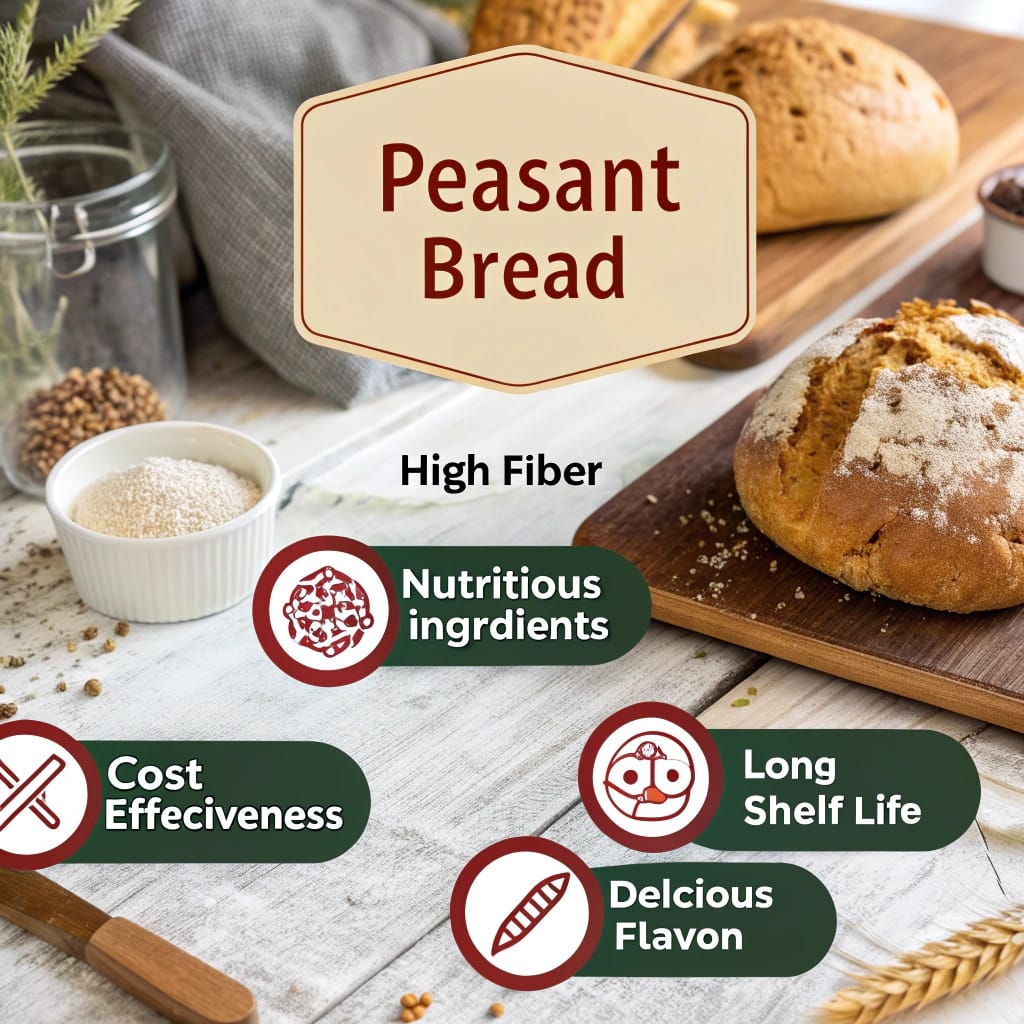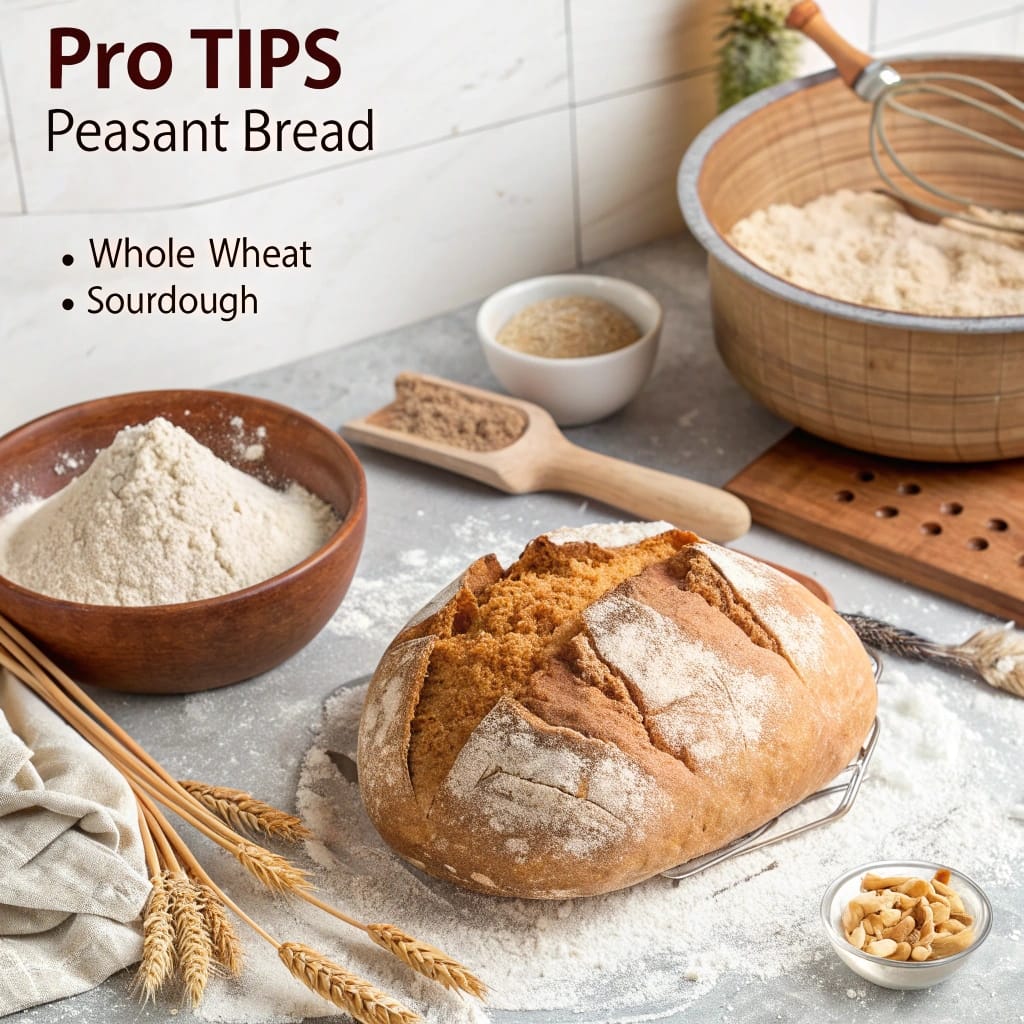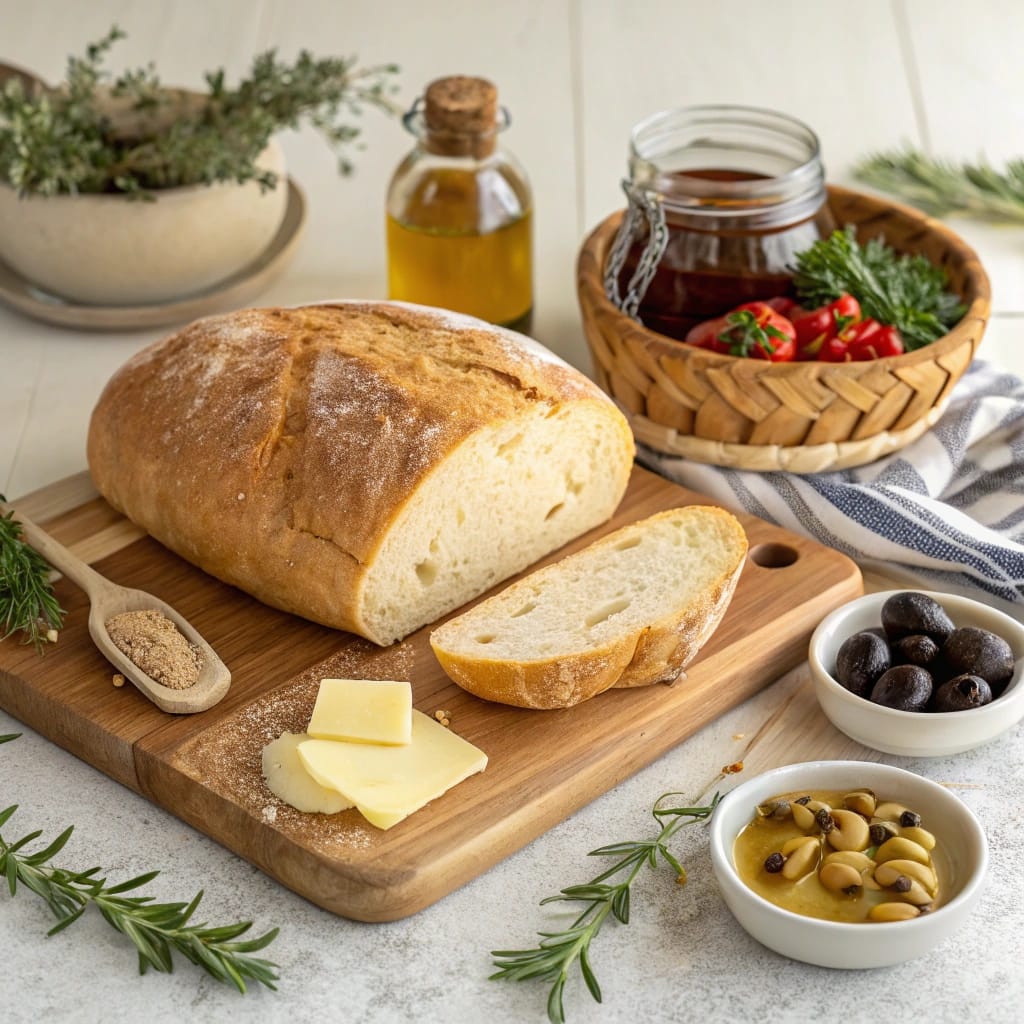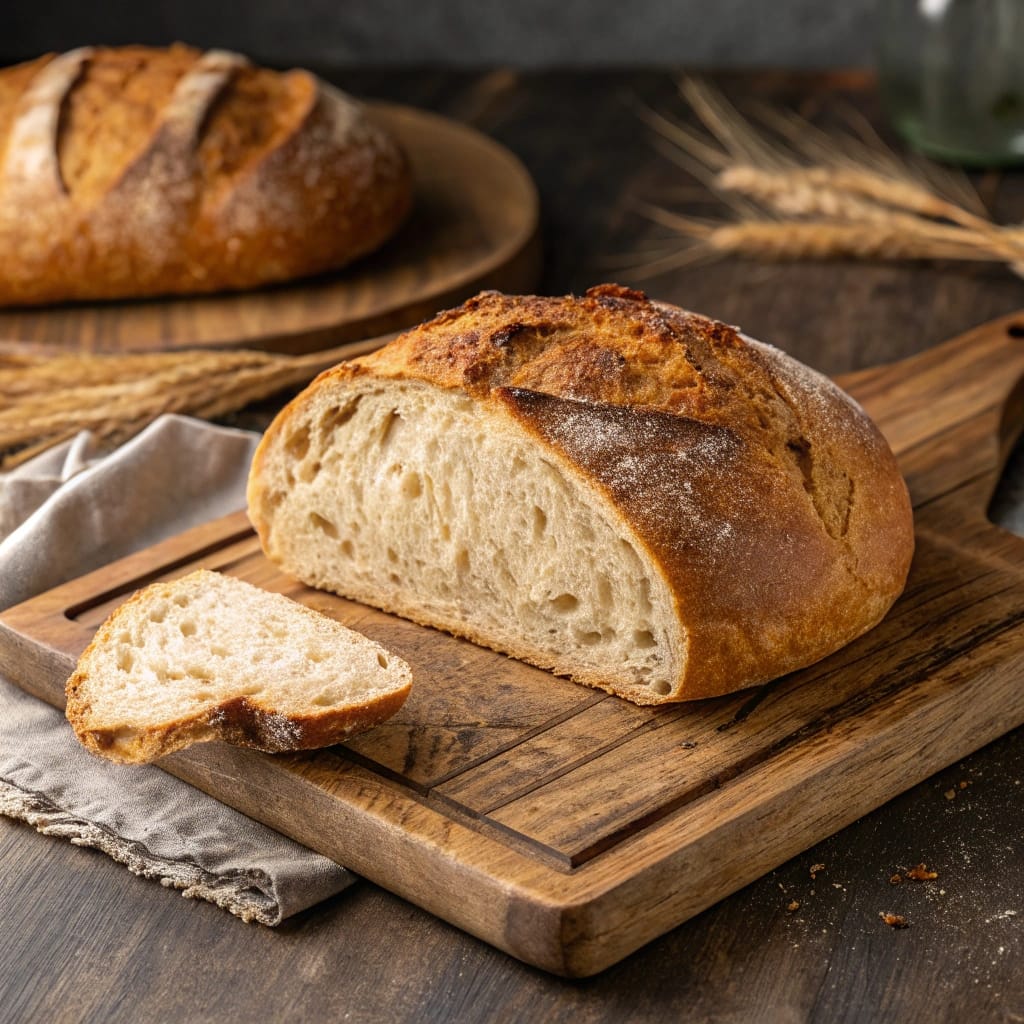Table of Contents
Peasant Bread: A Hearty, Rustic Delight
If you’ve ever craved warm, rustic bread with a delightful, comforting aroma, Peasant Bread is the perfect recipe to add to your repertoire. This simple yet delicious bread brings you back to a time when baking was done by hand, and bread was crafted with love and patience. With its golden crust and soft, airy interior, Peasant Bread is more than just food – it’s an experience that connects you with the past while delighting your taste buds today. Whether you’re new to baking or a seasoned pro, you’ll find this recipe easy to follow and hard to resist.
Key Benefits of Making Peasant Bread
Baking Peasant Bread at home comes with a variety of benefits:
- Simplicity
This bread requires only a few basic ingredients and minimal steps, making it perfect for beginners and seasoned bakers alike. No complex techniques—just easy, wholesome ingredients. - Cost-Effective
Baking your own bread can save you money compared to buying artisan bread at the store. Plus, the satisfaction of creating it yourself makes the effort worthwhile. - Customization
While Peasant Bread is already delicious on its own, you can easily customize it by adding herbs, garlic, or even olives. This versatility makes it suitable for any meal. - Freshness
There’s nothing like the taste and aroma of freshly baked bread. Homemade bread is free from preservatives, ensuring that you get the healthiest loaf possible. - Nutritional Value
By baking your own bread, you control the ingredients, which means you can choose high-quality flours and add ingredients like whole wheat or seeds for added nutritional value.

Ingredients for Peasant Bread
The best part about Peasant Bread is its simplicity. You don’t need fancy ingredients to make this bread; just a few essentials will do. Here’s what you’ll need:
- 4 cups all-purpose flour (or a mix of all-purpose and whole wheat flour)
- 1 packet active dry yeast
- 1 ½ teaspoons salt
- 1 ½ cups warm water
- 1 tablespoon sugar (to help activate the yeast)
- 2 tablespoons olive oil (for a slight richness and flavor)
These basic ingredients come together to create a bread that’s both hearty and flavorful. For added variety, you can include ingredients like rosemary, garlic, or other herbs.
Instructions for Making Peasant Bread
Making Peasant Bread is easy and rewarding. Just follow these simple steps, and you’ll have a beautiful loaf of bread in no time.
- Activate the Yeast
In a bowl, combine warm water, sugar, and yeast. Stir gently and let it sit for 5-10 minutes, until the yeast becomes foamy. - Mix the Dough
In a large mixing bowl, add flour and salt. Make a well in the center, and pour in the yeast mixture along with the olive oil. Mix until the dough begins to come together. - Knead the Dough
Turn the dough out onto a floured surface and knead it for about 8-10 minutes, or until it becomes smooth and elastic. Add more flour if the dough is too sticky. - First Rise
Place the dough in a lightly oiled bowl and cover it with a clean kitchen towel. Let it rise for 1-2 hours, or until it has doubled in size. - Shape the Dough
Once the dough has risen, punch it down to release the air. Shape it into a round or oval loaf and place it on a baking sheet lined with parchment paper. - Second Rise
Cover the shaped dough with a towel and let it rise again for about 30 minutes. This will help the bread achieve a light and airy texture. - Bake
Preheat the oven to 375°F (190°C). Bake the bread for 30-35 minutes, or until the crust is golden brown and the loaf sounds hollow when tapped on the bottom. - Cool and Serve
Remove the bread from the oven and allow it to cool on a wire rack. Slice and serve while warm, or let it cool completely for later use.
Pro Tips and Variations
To take your Peasant Bread to the next level, try these pro tips and variations:
- Add Flavor with Herbs
For a savory twist, incorporate fresh herbs like rosemary, thyme, or oregano into the dough. Garlic, either roasted or minced, can also add a rich flavor. - Make It Whole Wheat
Replace half or all of the all-purpose flour with whole wheat flour to create a heartier, more nutritious loaf. - Use a Dutch Oven
If you want a rustic, artisan-style crust, try baking the dough in a preheated Dutch oven. This method traps steam, which creates a beautiful, crispy exterior. - Try a No-Knead Version
If you prefer a hands-off method, there are no-knead versions of Peasant Bread that involve a longer rise time, which results in a slightly different texture but still delicious bread.

Serving Suggestions for Peasant Bread
The versatility of Peasant Bread makes it a perfect addition to a wide variety of meals:
- As a Side Dish
Serve your fresh loaf alongside hearty stews, soups, or salads. The warm, chewy texture complements a variety of dishes. - For Sandwiches
Slice the bread thickly and fill it with your favorite deli meats, cheese, and veggies for a satisfying sandwich. - With Butter
A simple slice of warm Peasant Bread with butter is always a comforting treat. Add a drizzle of honey or your favorite jam for an extra touch of sweetness. - With Dips
Serve slices of this rustic bread with olive tapenade, hummus, or a creamy spinach dip for a delightful appetizer.

Conclusion: Why You’ll Love Peasant Bread
Peasant Bread offers a warm, rustic, and comforting experience that’s hard to beat. With just a few basic ingredients and some patience, you can create a loaf that’s perfect for any meal, any occasion. Whether you enjoy it as a side to a savory dish or savor it with butter as a snack, this homemade bread is sure to become a staple in your kitchen. Easy to make and incredibly satisfying, Peasant Bread is truly a bread that brings people together.
FAQs About Peasant Bread
Q: Can I use whole wheat flour for Peasant Bread?
A: Yes, you can substitute whole wheat flour for part or all of the all-purpose flour. Keep in mind that whole wheat flour will make the bread denser.
Q: How can I store leftover Peasant Bread?
A: Store leftover bread in an airtight container or bread box at room temperature for up to 3 days. For longer storage, freeze slices and toast them as needed.
Q: Can I freeze Peasant Bread dough?
A: Yes, you can freeze the dough after the first rise. Simply shape it, wrap it tightly in plastic wrap, and freeze for up to 3 months. Thaw and let it rise again before baking.
Recap Recipe
Recipe Details:
- Prep Time: 15 minutes
- Cook Time: 35 minutes
- Total Time: 2 hours 15 minutes
- Servings: 12 slices
- Calories: 150 per slice
Nutrition Information (Per Serving):
- Calories: 150
- Fat: 2g
- Protein: 5g
- Carbs: 28g
- Fiber: 2g
- Sugar: 1g
Categorize the Recipe:
- Course: Side Dish, Snack
- Cuisine: Rustic, Mediterranean
- Diet: Vegetarian
- Method: Baking, Bread Machine (optional)
- Keyword: Peasant Bread, Homemade Bread
- Skill Level: Beginner
Categorization of the Article:
- Breakfast
- Lunch
- Dinner

